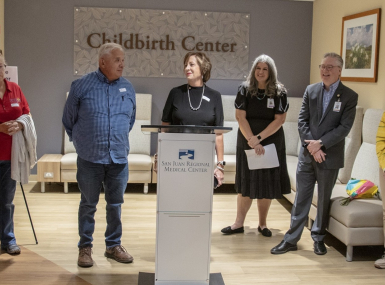Wearing a Uniform Doesn’t Make a Team
Author

Tim Rahschulte, Ph.D.
Upcoming Events
Related News

Who’s the best team? Not your favorite team but rather the best team. Maybe you’re thinking of a sports team, a team of astronauts or a medical team operating in an emergency room. Maybe it’s a political team, a military unit, your favorite nightly news anchors or a team of Olympians.
Whatever the team you’re thinking of right now, its members didn’t become great by chance or by wearing the same color scrubs or having the same patches on their uniforms or stickers on their gear. The difference between a group of loosely affiliated people and a high-performing team goes way beyond standard apparel or logos.
Any group of people aligned on achieving a purpose has the potential to be great. Any group has the possibility of becoming a high-performing team and realizing greatness. The potential and probability of that actually happening is contingent upon leadership. Realizing greatness is the product of leadership influence.
Among the best teams, there’s a leader who has instilled trust, created a compelling direction and vision of the future, established clear roles and expectations and created a forum or process for active collaboration, feedback, dialogue, action and follow-through. It’s like most everything in life: to achieve greatness, some assembly is required and when it comes to being the best team, it takes significant assembly on the part of the leader, as well as each member of the team.
Think about collaboration, for example. Whatever team you have in mind as being the best is no doubt made up of great collaborators. That doesn’t just happen among the members of that team. Great leaders intentionally design for collaboration to occur. Thornton May, the technology futurist and author of The New Know, argues that the essence of a team is intentional collaboration. In a recent article, he outlined three important lessons when it comes to establishing effective collaboration among team members.
First, leaders must recognize that collaboration cannot exist, nor can its value be realized, if there’s an absence of desire to collaborate among the members. Second, leaders must understand the collaboration tools available for use and leverage them accordingly. Third, you’ve got to listen to everyone on the team and throughout the team’s network to make collaboration effective. In other words, you’ve got to have members with a “team” attitude, not a “me” attitude. The best teams are those that are more effective at giving and receiving assistance; they act (individually and collectively) as if everyone has a stake in the outcome. In other words, they don’t confuse being right with getting it right.
If you’ve ever been part of a high-performing team, you know that the collective group cares less about any one of them being right and much more about making sure they get it right — whatever “it” is. It could be the right solution, the right communication at the right time or the right market move.
Any time you focus on being right rather than getting it right, you set up a negative competitive landscape and a zero-sum game. If you’re familiar with economics, you know all about zero-sum games — there’s always a winner and a loser. If you’re on a team in which members feel some will win and some will lose, you all lose every time.
A better approach is a team win: the team members either win together or they lose together. This approach fosters a culture in which people encourage one another, cheer for one another, and enable one another’s success because the win of a teammate is a win for the team — a win for everyone.
Think about your team. Is it high performing? Is there room for improvement? If you’re aiming for improvement, know that leadership isn’t about wielding authority and leveraging positional power.
It’s about effectively fostering the strengths of a collection of individuals and drawing those individuals into a team in such a way that all their strengths can be expressed, optimized, and leveraged. The best leaders understand that they must give of themselves —relinquishing ego and control and listening actively and attentively — in order to empower their teams to yield the greatest outcomes. As you assess and hone your own leadership abilities, remember that true leadership is always in service to your team, not in furtherance of your career. Focus on others and align their strengths to the team’s purpose. If you do this effectively, your career will naturally benefit.

Attachments
Related News
Interim county administrators bridge the gap and offer seasoned experience
After long careers in administration, some professionals relish a chance to help counties out for short stints when their Boards are in transition.

Counties attract talent by stressing public service appeal
Whether they’re up in the mountains or surrounded by millions of potential job candidates, counties face challenges recruiting talent to enter the public sector job market.

Now I know I can adapt my communication style
San Juan County, N.M. Commissioner Terri Fortner spent her career working with people one-on-one, but she overcame hangups about online communication when the pandemic forced her onto video calls when she first took office.